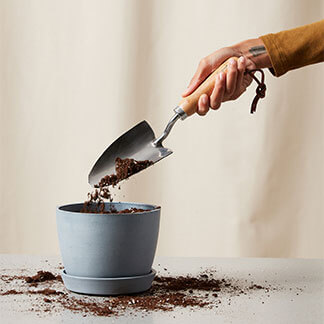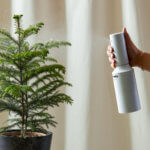How to care for your Conifer
Use these instructions to care for a Conifer. This guide will tell you how to water a Conifer; its light, temperature, humidity preferences and any additional care it might need to help it grow.
Lemon Cypress
Your Lemon Cypress prefers bright indirect light to direct sunlight. It will not do well in medium or low light environments.
Water your Lemon Cypress when 50% of the soil volume is dry. Water until liquid flows through the drainage hole at the bottom of the pot and discard any water that has accumulated in the saucer.
Your Lemon Cypress benefits from added humidity during the winter months. You can increase humidity for your Lemon Cypress by using a pebble tray, placing a humidifier nearby, or grouping it near other plants.
Your Lemon Cypress prefers cool to average room temperatures between 55-75°F. Avoid exposure to heating or cooling vents which can cause the humidity to drop.
Feed your Lemon Cypress once in the spring and once in the summer with a general-purpose fertilizer diluted to half-strength. No fertilizer is necessary during the fall and winter when plant growth naturally slows.
Lemon Cypress is considered to be toxic to pets and humans if ingested.
Branch tips turning dry and crispy is a common sign of low humidity that can occur over the winter months. Increasing humidity will often solve this issue. Lemon Cypress plants naturally maintain a narrow, upright growth pattern and generally do not need to be trimmed, but feel free to lightly prune your plant to enhance the shape or to remove dried, brown tips.
Norfolk Pine
Your Norfolk Pine prefers bright indirect light to direct sunlight. It can adapt to medium light areas, but it may become leggy and less full.
Water your Norfolk Pine when 25% of the soil volume is dry. Water until liquid flows through the drainage hole at the bottom of the pot and discard any water that has accumulated in the saucer. If the plant stays too dry, the tips of its branches will turn brown and crispy.
Your Norfolk Pine will appreciate a boost in humidity during the winter months. You can increase humidity for your Norfolk Pine by using a pebble tray, placing a humidifier nearby, or grouping it near other plants.
Your Norfolk Pine prefers average room temperatures between 65-85°F. Avoid drafty areas near heating or cooling vents, exterior doors, and windows.
Feed your Norfolk Pine once a month during spring and summer with a general-purpose fertilizer diluted to half-strength. No fertilizer is necessary during the fall and winter when plant growth naturally slows.
Norfolk Pines are considered to be toxic to pets and humans if ingested.
To encourage faster growth on your Norfolk Pine, move it outdoors to a shaded or partially shaded spot during the summer. Wait until all danger of frost has passed before moving it outdoors and bring it back in before the first frost in fall.














